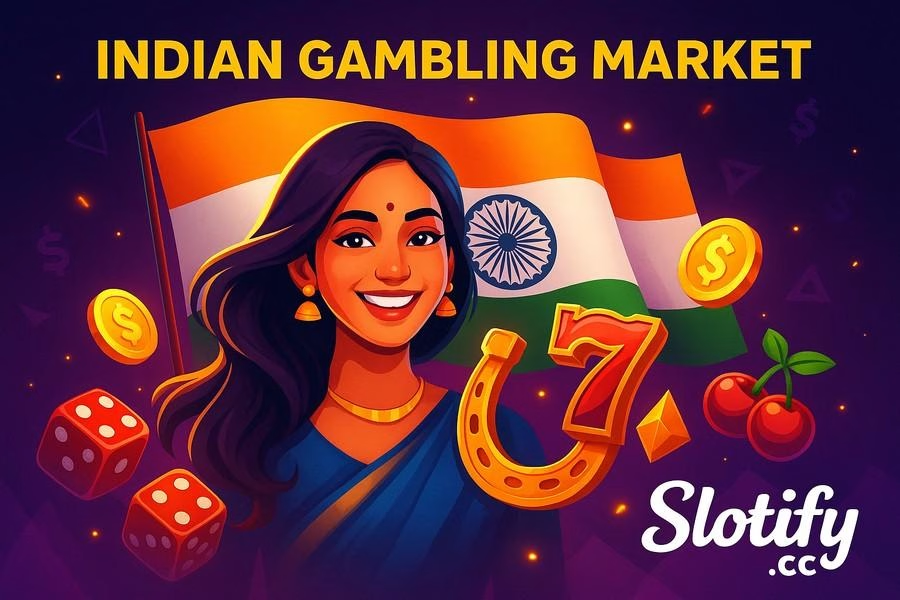
Indian Online Gambling Market: A 2025 Overview
The Indian online gambling market has undergone dramatic transformation in the past decade. What was once a grey area of uncertain legal status is now emerging as one of the fastest-growing digital economies in the country. In 2024, India’s online gambling market was estimated at $3.7 billion and forecasts suggest that figure could more than double, reaching $9.1 billion by 2029. The real money gaming segment, which includes skill-based games, card games, and betting, now makes up over 85% of this market.
This growth is fueled by the immense size of the Indian population and its digital evolution. India is home to over 591 million active gamers, representing nearly a fifth of the global gaming audience. Thanks to a mobile-first economy and some of the lowest data costs in the world, gambling platforms are just a few taps away for millions of players. Even in rural areas, internet penetration and smartphone usage continue to grow steadily. The Indian online gambling market is not just expanding—it’s accelerating.
Navigating Legal Complexities in the Indian iGaming Industry
Online gambling in India exists in a uniquely fragmented legal environment. At the national level, the Public Gambling Act of 1867 still governs most gambling legislation, yet it doesn’t cover online play. This creates a loophole that state governments are left to interpret on their own. Some states, such as Goa, Daman, and Sikkim, have legalized forms of land-based and online gambling. Others, including Telangana and Andhra Pradesh, have opted for outright bans.
This state-by-state model has led to a patchwork of regulation that can be difficult to navigate for both players and platforms. While offshore operators often accept Indian users, the question of legality depends heavily on where the player resides. The Indian government has acknowledged the need for clarity. Recent changes to the Information Technology Rules have introduced tighter controls over gaming platforms and content, signaling a shift toward formal regulation and oversight.
What Fuels the Rise of Online Gambling in India
The momentum behind the Indian online gambling market is rooted in multiple forces working in tandem. The country has one of the youngest populations in the world, with a median age under 30. This digitally native generation is comfortable with mobile-first services, mobile payments, and app-based entertainment. Affordable smartphones and widely accessible 4G data have created the infrastructure for online gambling to flourish.
India’s real money gaming segment has also grown thanks to innovations in digital finance. The introduction of UPI, mobile wallets, and instant bank transfers have made deposits and withdrawals easier for players across income brackets. The popularity of local card games and game formats—such as teen patti and rummy—has transitioned naturally to digital platforms. This cultural familiarity with games involving stakes has been a critical factor in India’s enthusiastic uptake of online gambling.
India Compared to Global Gambling Markets
Globally, the online gambling industry reached a market size of $95.5 billion in 2024 and is projected to grow to over $250 billion within the next decade. While India currently contributes a modest share to this global figure, its year-on-year growth rate positions it as one of the most promising emerging markets. Unlike mature jurisdictions such as the UK or the US, where market saturation has slowed growth, India continues to attract new players daily.
For comparison, the United States online gambling market is driven largely by sports betting and casino apps legalized at the state level. The UK, meanwhile, is governed by a well-established licensing body. India, by contrast, is just beginning to define what regulation and compliance should look like. If clear policies are adopted at the national level, India could easily become a global leader not only in user base but also in revenue generation.
Addressing the Risks and Roadblocks
As with any rapidly growing sector, the Indian online gambling market faces its share of risks. One of the most pressing issues is the lack of consistent regulation. Without national oversight, rogue operators can still target Indian players without consequence, putting users at risk. Additionally, varying interpretations of “games of skill” versus “games of chance” have created confusion and inconsistent enforcement.
Another critical issue is payment friction. While digital finance tools have made it easier to play online, some banks and payment gateways block gambling transactions due to unclear legal positioning. This can make it harder for legitimate users to deposit or cash out their winnings. There’s also a growing concern over problem gambling and addiction. Although data is limited, platforms will need to take proactive measures to ensure responsible play as the industry matures.
Industry Momentum and Stakeholder Involvement
Despite these obstacles, momentum is building among stakeholders to legitimize and regulate the industry. Bodies like the All India Gaming Federation (AIGF) have taken steps to establish self-regulation, promote responsible gambling practices, and represent the interests of Indian operators. Their calls for a unified national framework are beginning to gain attention among policymakers.
These efforts are not just about growth—they are about long-term sustainability. A secure and transparent market is essential for both user trust and international investment. If India can standardize its regulations and enforce them evenly, it will have a real chance to attract global developers, technology providers, and platforms looking to expand into new territories.
Opportunities on the Horizon
Looking ahead, the Indian online gambling market is rich with opportunity. Technologies like blockchain, AI, and data analytics can help build platforms that are secure, fair, and customized to user behavior. India’s tech-savvy population is already embracing mobile-first platforms for everything from banking to entertainment. Gambling platforms that offer local language support, intuitive UX, and seamless payments are poised to lead the next phase of growth.
Localized content will also be key. Indian players prefer culturally familiar games and social interaction. Multiplayer formats, leaderboard competitions, and seasonal promotions tied to local festivals could set new benchmarks for user engagement. While international models offer guidance, Indian innovation will define the local market’s future.
A Real-World Perspective
Many Indian players describe their entry into online gambling as an extension of social gaming or mobile-based entertainment. The shift from playing teen patti or rummy offline to exploring them online is often smooth. With digital payments becoming second nature, the barrier to real money gaming has never been lower.
For international observers and domestic investors alike, the message is clear. India is no longer a sleeping giant—it’s actively defining the future of the global iGaming industry. The stakes are high, the pace is fast, and the market is still open enough for new voices to enter the space.
Where to Learn More
For authoritative updates on policy and regulation, the Ministry of Electronics and Information Technology remains the most up-to-date resource on current and upcoming frameworks.









